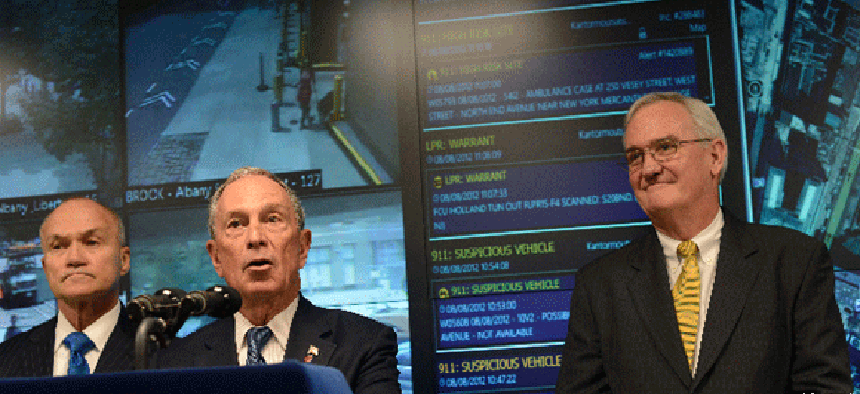'Person of Interest' has the Machine, NYC has Dashboard


Connecting state and local government leaders
The Domain Awareness System, developed by Microsoft and New York City police, combines data gathered by 3,000 cameras and other sensors with crime data for a better picture of events as they unfold.
“You are being watched.” That’s the tag line to my current favorite TV show, “Person of Interest.” The show features a crime-fighting duo who use a network of cameras and computers around New York City and a device called “the Machine” to predict and fight crime. The show is based on some actual technology even it works at a somewhat magical level, but I never thought that NYC would flip the switch on something that is just about as impressive.
In real life, the system is known as “the Dashboard” and was designed by cops working with Microsoft. GCN reported on the development of the system when it was just getting started, and now the Associated Press says it’s ready for prime time. Significantly for NYC, the city will get a cut of the action should Microsoft sell the system to other cities.
The full name of the technology is the Domain Awareness System. It uses a lot of the infrastructure already in place in and around New York and ties it together to create a situational-awareness picture in the command center at police headquarters. Eventually, the plan is to give individual officers full access to the Dashboard via their laptops in cars or on mobile devices for cops walking a beat.
Although the plan is to sell the system to other jurisdictions, I doubt that every city could successfully, or at least as successfully, implement the system. New York has over 3,000 cameras tied into it that watch everything from streets to alleyways to federal buildings to parks. Cameras are mounted on light poles, rooftops and the sides of buildings, and they are a ubiquitous part of the city now -- ever-present but mostly ignored.
The Dashboard takes those camera feeds and ties them together with other data the city collects, such as arrest records, 911call information, data from license plate readers and even sensor information coming from portable radiation detectors. It works by pulling all relevant data together in one place as a situation unfolds.
As an example, during a shooting incident last summer at the Empire State Building, the system was tested, and helped to diffuse the police response, according to a CNN article. With many 911 calls coming in about the ongoing incident, a dispatcher might have thought that multiple shooters were involved. But by using the system, police could instantly view all the cameras in a five-block radius, and rewind footage up to five minutes. They quickly identified a single gunman and could see that nobody else was involved.
Other uses of the system, as pointed out by NYC officials, include instant access to 911-call records from a certain location so responding officers could know the history of the caller, automatically spotting packages that have been left in place for a long period of time and collecting the arrest records of suspects involved in crimes.
The system also, for example, could check its radiation sensors when a bomb threat is made or a suspicious package discovered, to make sure there is no nuclear payload like a dirty bomb. And if radiation is detected, police could take appropriate action and begin evacuation procedures, even before a single officer arrives on the scene.
Given the current capabilities of modern technology, I would suspect that the Dashboard could also be programmed to use facial recognition to find any suspect with an outstanding warrant who strays in front of a camera, which is more like the “Person of Interest” show than reality at the moment. City officials don’t say that the Dashboard is being used that way, but the infrastructure is in place and analytics software is available, so it doesn’t seem that far off. I’ve seen this type of system work in the GCN Lab, and a similar system was used during last fall’s Republican National Convention in Tampa, Fla.
Some would say that this is a huge invasion of privacy; that nobody will be able to walk down the street without police monitoring their every move, especially when this gets pushed all the way out to the beat cops. Perhaps. But what do you think those 3,000 NYC cameras are doing right now? We already are being watched, especially those of us who live someplace like New York City or London with a big security infrastructures.
The Dashboard is just a way to efficiently manage all the data that’s being collected. It takes a somewhat disjointed, blurry picture and focuses all the resources needed, on the fly, to deal with almost any situation. Should it continue to have success in New York, expect to start seeing versions of the Dashboard in other places where the infrastructure could support it, or even as an excuse for some cities to invest in more cameras and other sensors that can suddenly be managed much more effectively.
NEXT STORY: 12 things you should know about mobile learning




